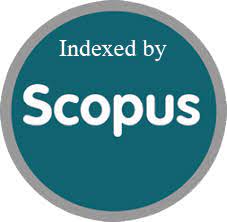The Unseen Threads: Weaving Digital Habits into the Fabric of Work Productivity
Keywords:
Cyberloafing, Online Leisure, Innovation, Employee Behavior, Organizational Behavior, Time Management,, Digital Distraction, Job Satisfaction, Counterproductive Work Behavior (CWB), Procrastination, Boredom at Work, StressAbstract
This inquiry delves into the multifaceted phenomenon of cyberloafing, scrutinizing its paradoxical capacity to either stimulate innovation or impede organizational achievement. Employing a comprehensive analogical analysis, this study draws parallels between prevalent cyberloafing behaviors and established paradigms within organizational psychology and human resources. By forging connections with constructs such as employee dedication, collaborative knowledge exchange, and adverse workplace conduct, we endeavor to illuminate the fundamental drivers and situational elements that modulate Cyberloafing's overall impact. Our investigation seeks to delineate the specific contexts wherein cyberloafing might cultivate creative thought and intellectual exploration, contrasting these with conditions that precipitate diminished output and undesirable repercussions. The emergent insights from this research offer pragmatic guidance for leaders and enterprises striving to comprehend and strategically navigate digital leisure in the professional sphere, thereby fostering environments conducive to both productivity and progressive ideation.
Downloads
Metrics
References
Anandarajan, M., & Simmers, C. S. (2005). Understanding cyberloafing behavior. Journal of Cyber Psychology & Behavior, 8(6), 689-702.
Lim, V. K. G., & Chen, C. P. (2012). Cyberloafing at the workplace: Gain or drain for organizations?. Behaviour & Information Technology, 31(4), 343-358.
Miralles, F., & Telechea, J. (2016). Cyberloafing: A systematic review. Computers in Human Behavior, 62, 825-834.
Oravec, J. A. (2002). Cyberloafing: Productive or destructive use of Internet resources. Information Management Journal, 36(3), 22-26.
Bommer, W. H., & Dalton, D. R. (2000). The relationship between employees' perceived justice and organizational citizenship behavior. Journal of Management, 26(1), 1-26.
Campbell, J. P., McCloy, R. A., Oppler, C. E., & Sager, J. C. (1993). A theory of performance. In N. Schmitt, W. C. Borman, & Associates (Eds.), Personnel selection (pp. 35-70). Jossey-Bass.
Viswesvaran, C., & Ones, D. S. (2000). Perspectives on the construct of job performance. International Journal of Selection and Assessment, 8(4), 201-212.
Amabile, T. M. (1998). How to kill creativity. Harvard Business Review, 76(5), 76-87.
Oldham, G. R., & Cummings, A. (1996). Employee creativity: Personal and contextual influences. Academy of Management Journal, 39(2), 304-332.
Zhou, J., & George, J. M. (2001). When and why should individuals be creative? The influence of goal orientation. Journal of Applied Psychology, 86(6), 1073.
Bakker, A. B., & Demerouti, E. (2008). Toward a model of work engagement. Career Development International, 13(2), 209-223.
Berry, C. M., Ones, D. S., & Sackett, P. R. (2007). A meta-analytic investigation of the relationships between counterproductive work behavior, attitudes, and organizational citizenship behavior. Journal of Applied Psychology, 92(2), 371.
Robinson, S. L., & Bennett, R. J. (1995). A typology of deviant workplace behaviors: A multidimensional scaling study. Academy of Management Journal, 1 38(2), 555-572.
Ayyagari, R., Grover, V., & Purvis, R. L. (2011). Technostress: Technological antecedents and implications. MIS Quarterly, 35(4), 831-858.
Tarafdar, M., Tu, Q., Ragu-Nathan, B. S., & Ragu-Nathan, T. S. (2011). Crossing to the dark side: Examining the effects of technostress and switching costs on technology adaptation and continuance. Journal of Management Information Systems, 28(3), 99-131
Downloads
Published
How to Cite
Issue
Section
License

This work is licensed under a Creative Commons Attribution 4.0 International License.
You are free to:
- Share — copy and redistribute the material in any medium or format
- Adapt — remix, transform, and build upon the material for any purpose, even commercially.
Terms:
- Attribution — You must give appropriate credit, provide a link to the license, and indicate if changes were made. You may do so in any reasonable manner, but not in any way that suggests the licensor endorses you or your use.
- No additional restrictions — You may not apply legal terms or technological measures that legally restrict others from doing anything the license permits.






